При обслуживании больших сетей системные администраторы часто сталкиваются с проблемами аутентификации на сетевом оборудовании. В частности, довольно сложно организовать нормальную работу нескольких сетевых администраторов под индивидуальными учетными записями на большом количестве оборудования (приходится вести и поддерживать в актуальном состоянии базу локальных учетных записей на каждом устройстве). Логичным решение было бы использовать для авторизации уже существующей базы учетных записей — Active Directory. В этой статье мы разберемся, как настроить доменную (Active Directory) аутентификацию на активном сетевом оборудовании (коммутаторы, маршрутизаторы).
Не все сетевое оборудование популярных вендоров (CISCO, HP, Huawei) поддерживает функционал для непосредственного обращения к каталогу LDAP, и такое решение не будет универсальным. Для решения нашей задачи подойдет протокол AAA (Authentication Authorization and Accounting), фактически ставший стандартом де-факто для сетевого оборудования. Клиент AAA (сетевое устройство) отправляет данные авторизующегося пользователя на сервер RADIUS и на основе его ответа принимает решение о предоставлении / отказе доступа.
Протокол Remote Authentication Dial In User Service (RADIUS) в Windows Server 2012 R2 включен в роль NPS (Network Policy Server). В первой части статьи мы установим и настроим роль Network Policy Server, а во второй покажем типовые конфигурации сетевого устройств с поддержкой RADUIS на примере коммутаторов HP Procurve и оборудования Cisco.
Содержание:
- Установка и настройка сервера с ролью Network Policy Server
- Настройка сетевого оборудования для работы с сервером RADUIS
Установка и настройка сервера с ролью Network Policy Server
Как правило, сервер с ролью NPS рекомендуется устанавливать на выделенном сервере (не рекомендуется размещать эту роль на контроллере домена). В данном примере роль NPS мы будем устанавливать на сервере с Windows Server 2012 R2.
Откройте консоль Server Manager и установите роль Network Policy Server (находится в разделе Network Policy and Access Services).
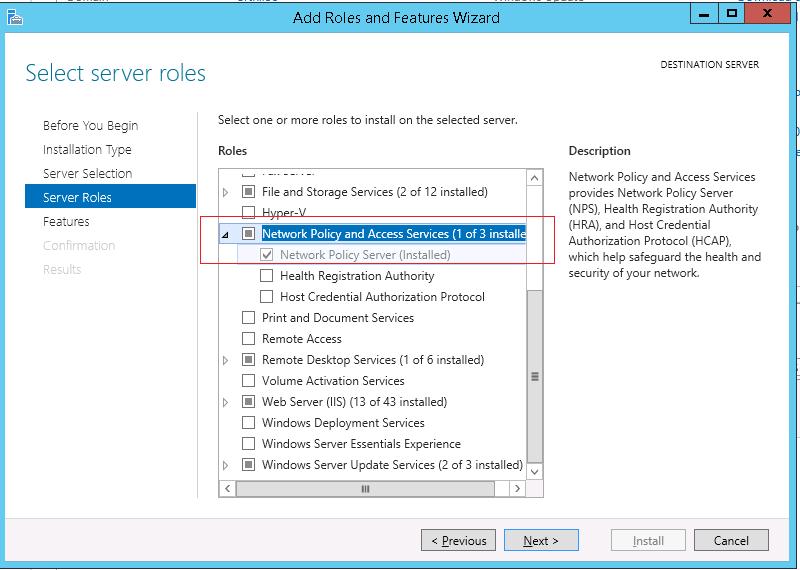
После окончания установки запустите mmc-консоль управления Network Policy Server. Нас интересуют три следующих раздела консоли:
- RADIUS Clients — содержит список устройств, которые могут аутентифицироваться на сервере
- Connection Request Policies – определяет типы устройств, которые могут аутентифицироваться
- Network Polices – правила аутентификации
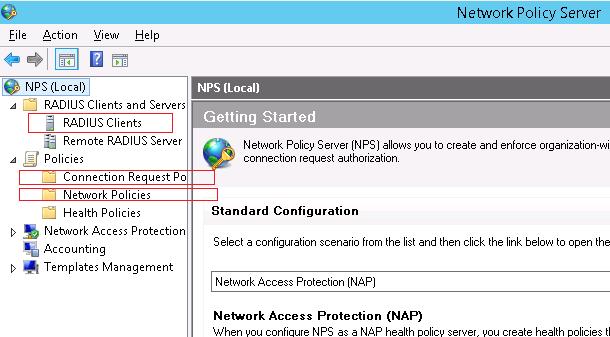
Добавим нового клиента RADIUS (это будет коммутатор HP ProCurve Switch 5400zl), щелкнув ПКМ по разделу RADIUS Clients и выбрав New. Укажем:
- Friendly Name:sw-HP-5400-1
- Address (IP or DNS): 10.10.10.2
- Shared secret (пароль/секретный ключ): пароль можно указать вручную (он должен быть достаточно сложным), либо сгенерировать с помощью специальной кнопки (сгенерированный пароль необходимо скопировать, т.к. в дальнейшем его придется указать на сетевом устройстве).
Отключим стандартную политику (Use Windows authentication for all users) в разделе Connection Request Policies, щелкнув по ней ПКМ и выбрав Disable.
Создадим новую политику с именем Network-Switches-AAA и нажимаем далее. В разделе Сondition создадим новое условие. Ищем раздел RADIUS Client Properites и выбираем Client Friendly Name.
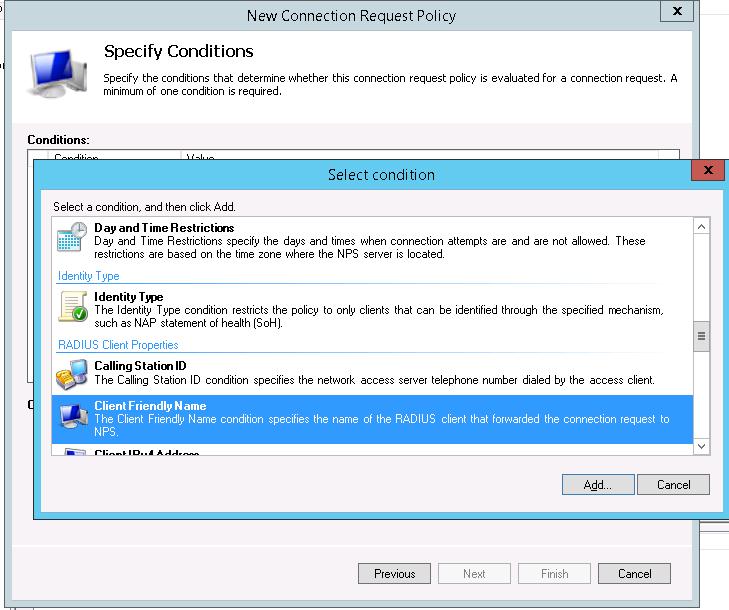
В качестве значения укажем sw-?. Т.е. условие будет применяться для всех клиентов RADIUS, начинающийся с символов :”sw-“. Жмем Next->Next-> Next, соглашаясь со всеми стандартными настройками.
Далее в разделе Network Policies создадим новую политику аутентификации. Укажите ее имя, например Network Switch Auth Policy for Network Admins. Создадим два условия: в первом условии Windows Groups, укажем доменную группу, члены которой могут аутентифицироваться (учетные записи сетевых администраторов в нашем примере включены в группу AD Network Admins) Второе условие Authentication Type, выбрав в качестве протокола аутентификации PAP.

Далее в окне Configure Authentication Methods снимаем галки со всех типов аутентификации, кроме Unencrypted authentication (PAP. SPAP).
В окне Configure Settings изменим значение атрибута Service-Type на Administrative.

В остальных случаях соглашаемся со стандартными настройками и завершаем работу с мастером.
И, напоследок, переместим новую политику на первое место в списке политик.

Настройка сетевого оборудования для работы с сервером RADUIS
Осталось настроить наше сетевое оборудование для работы с сервером Radius. Подключимся к нашему коммутатору HP ProCurve Switch 5400 и внесем следующе изменение в его конфигурацию (измените ip адрес сервера Raduis и пароль на свои).
aaa authentication console enable radius local aaa authentication telnet login radius local aaa authentication telnet enable radius local aaa authentication ssh login radius local aaa authentication ssh enable radius local aaa authentication login privilege-mode radius-server key YOUR-SECRET-KEY radius-server host 10.10.10.44 YOUR-SECRET-KEY auth-port 1645 acct-port 1646 radius-server host 10.10.10.44 auth-port 1645 radius-server host 10.10.10.44 acct-port 1646
Совет. Если в целях безопасности вы запретили подключаться к сетевому оборудованию через telnet, эти строки нужно удалить из конфига:
aaa authentication telnet login radius local aaa authentication telnet enable radius local
Не закрывая консольное окно коммутатора (это важно!, иначе, если что-то пойдет не так, вы более не сможете подключиться к своему коммутатору), откройте вторую telnet-сессию. Должно появиться новое окно авторизации, в котором будет предложено указать имя и пароль учетной записи. Попробуйте указать данные своей учетной записи в AD (она должна входить в группу Network Admins ). Если подключение установлено – вы все сделали правильно!
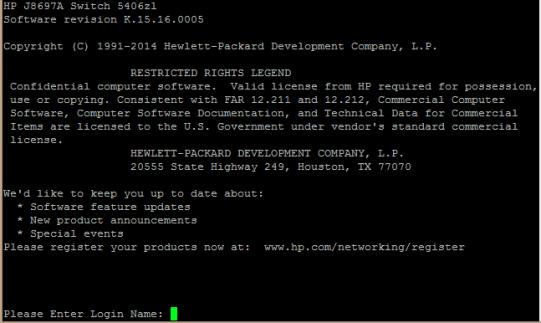
Для коммутатора Cisco конфигурация, предполагающая использование доменных учетных записей для аутентификации и авторизации, может выглядеть так:
Примечание. В зависимости от модели сетевого оборудования Cisco и версии IOS конфигурация может несколько отличаться.
aaa new-model radius-server host 10.10.10.44 auth-port 1645 acct-port 1646 key YOUR-SECRET-KEY aaa authentication login default group radius local aaa authorization exec default group radius local ip radius source-interface Vlan421 line con 0 line vty 0 4 line vty 5 15
Примечание. В такой конфигурации для аутентификации сначала используется сервер RADIUS, а если он не доступен – локальная учетная запись.
Для Cisco ASA конфигурация будет выглядеть так:
aaa-server RADIUS protocol radius aaa-server RADIUS host 10.10.10.44 key YOUR-SECRET-KEY radius-common-pw YOUR-SECRET-KEY aaa authentication telnet console RADIUS LOCAL aaa authentication ssh console RADIUS LOCAL aaa authentication http console RADIUS LOCAL aaa authentication http console RADIUS LOCAL
Совет. Если что то-не работает, проверьте:
- Совпадают ли секретные ключи на сервере NPS и коммутаторе (для теста можно использоваться простой пароль).
- Указан ли правильный адрес NPS сервера в конфигурации. Пингуется ли он?
- Не блокируют ли межсетевые экраны порты 1645 и 1646 между коммутатором и сервером?
- Внимательно изучите логи NPS сервера
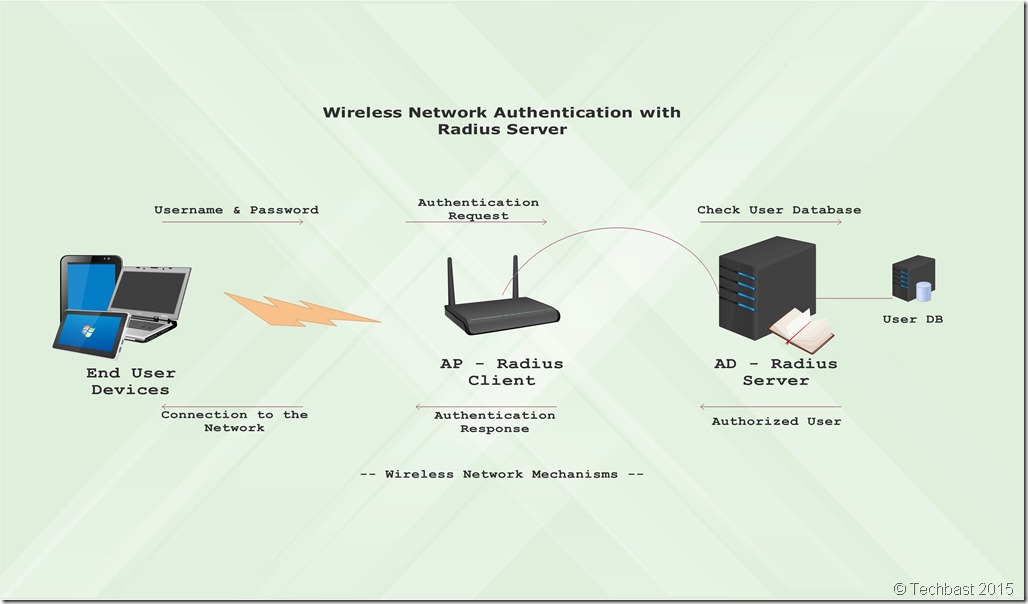
Why you should choice the Enterprise mode to authentication your wifi user. In this short video tutorial I’ll show you that…
Network topology:

1. Benefits:
– End-users can logon with usernames and passwords.
– End-users securely receive unique encryption keys at each session.
– Administrator can change the login credentials and revoke access per user.
– This mode provides better encryption key security.
2. Contents:
– Setting up Access point as a Radius Client.
– Create test account and put them to allowed access Wifi group.
– Install Active Directory Certificate Services.
– Request Certificate.
– Install Network Policy and Access Service Role, DHCP Server.
– Configure Network Policy and Access Service Role.
– Configure Network Setting on Client Machines.
3. Prerequisite:
– 01 Windows Server 2012 R2 with AD promoted.
– 01 Windows 7 (Client Machine).
4. Assign IP address:
|
AD – Radius Server |
Access Point |
|
| IP Address |
192.168.1.10 |
192.168.1.252 |
| Subnet mask |
255.255.255.0 |
255.255.255.0 |
| Default gateway |
192.168.1.1 |
192.168.1.1 |
| Preferred DNS |
192.168.1.10 |
5. Implementation by Video:
Have fun!
- Wireless Authentication Radius Server
Radius Server Installation on Windows 2012
Radius Server Installation on Windows 2012
Would you like to learn how to perform a Radius Server Installation on Windows 2012? In this tutorial, we are going to show you how to install and configure the Radius service on Windows server.
• Windows 2012 R2
• Network Policy and Access Service
In our example, the Radius server uses the IP address 192.168.0.50.
In our example, a Network Switch uses the IP address 192.168.0.10.
In our example, a Desktop running Windows 10 uses the IP address 192.168.0.20.
Both the Network Switch and the Desktop want to authenticate on the Radius database.
Windows Playlist:
On this page, we offer quick access to a list of videos related to Windows installation.
Don’t forget to subscribe to our youtube channel named FKIT.
Windows Related Tutorial:
On this page, we offer quick access to a list of tutorials related to Windows.
Tutorial – Radius Server Installation on Windows
Open the Server Manager application.
Access the Manage menu and click on Add roles and features.

Access the Server roles screen, select the Network Policy and Access Service option.
Click on the Next button.
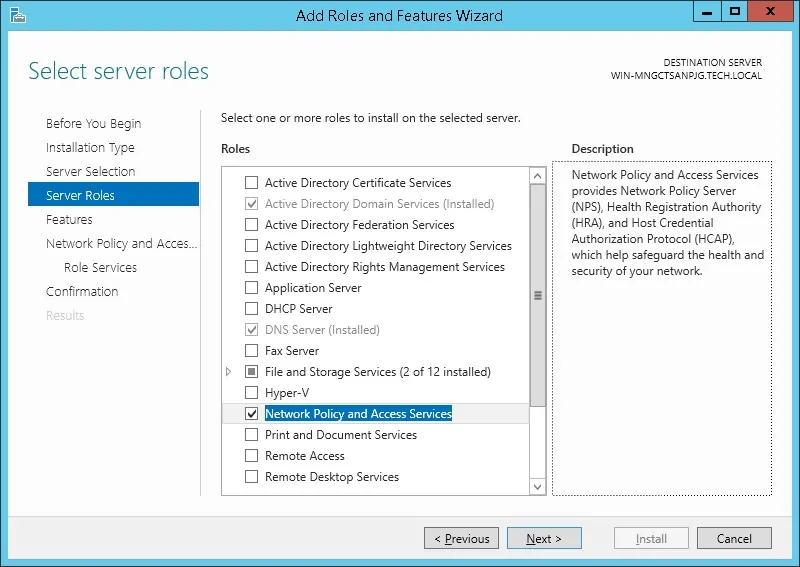
On the following screen, click on the Add features button.
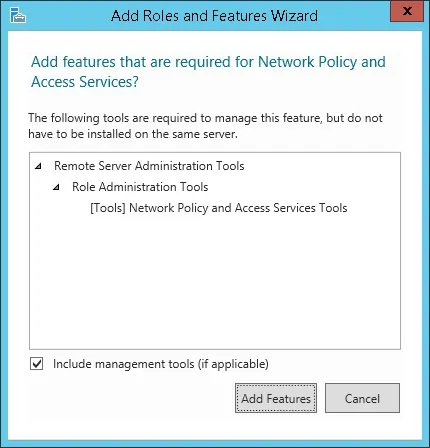
On the Role service screen, click on the Next Button.
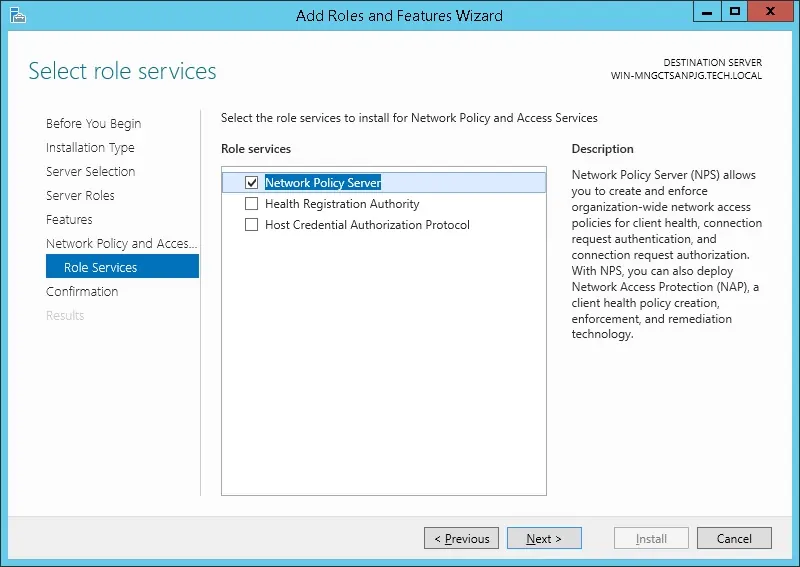
On the next screen, click on the Install button.

You have finished the Radius server installation on Windows 2012.
Tutorial Radius Server – Active Directory Integration
Next, you need to create a group of authorized users to authenticate using Radius.
The RADIUS-USERS group will list the user accounts that are allowed to authenticate on the Radius server.
On the domain controller, open the application named: Active Directory Users and Computers
Create a new group inside the Users container.

Create a new group named: RADIUS-USERS.
Members of this group will be allowed to authenticate on the Radius server.
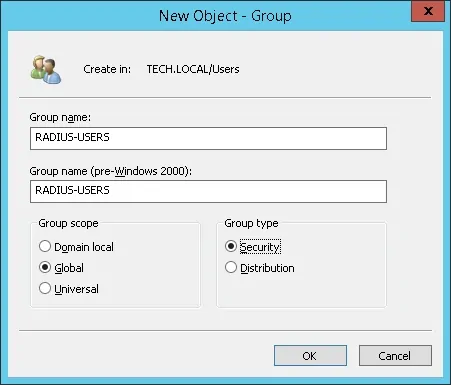
We will also create 2 user accounts to test our configuration.
Create a new user account inside the Users container.
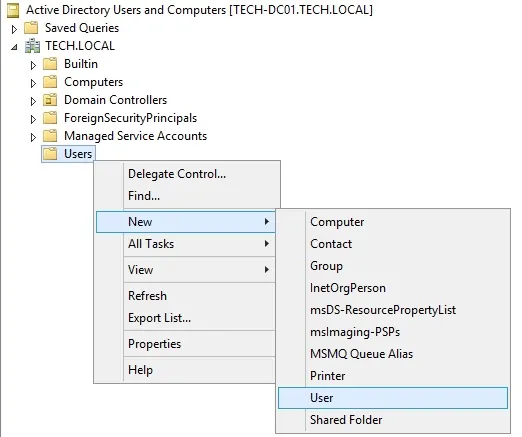
Create a new user account named: VEGETA
The Vegeta user account will be allowed to authenticate on the Radius server.
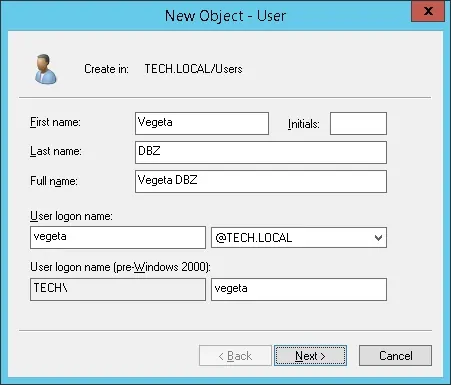
Set the Vegeta user account as a member of the RADIUS-USERS group.

Next, create a new user account named: GOKU
The Goku user account will not be a member of the RADIUS-USERS group.
The Goku user account will not be allowed to authenticate on the Radius server.
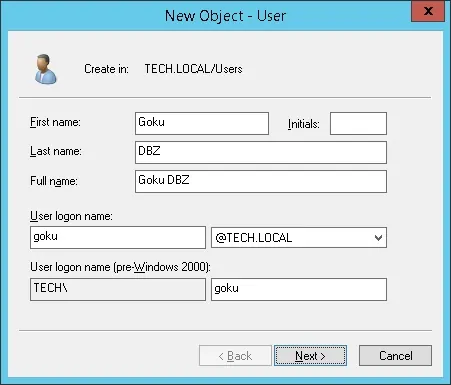
In our example, Members of the RADIUS-USERS are allowed to authenticate on the Radius server.
In our example, the Vegeta user account is a member of the RADIUS-USERS group.
In our example, the Goku user account is not a member of the RADIUS-USERS group.
You have finished the required Active Directory configuration.
Tutorial Radius Server – Add Client Devices
On the Radius server, open the application named: Network Policy Server
You need to authorize the Radius server on the Active directory database.
Right-click on NPS(LOCAL) and select the Register server in Active Directory option.
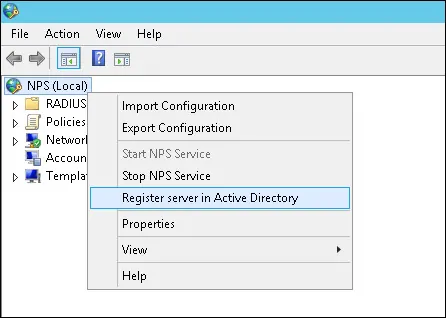
On the confirmation screen, click on the OK button.
Next, you need to configure Radius clients.
Radius clients are devices that will be allowed to request authentication from the Radius server.
Important! Do not confuse Radius clients with Radius users.
Right click on Radius Clients folder and select the New option.
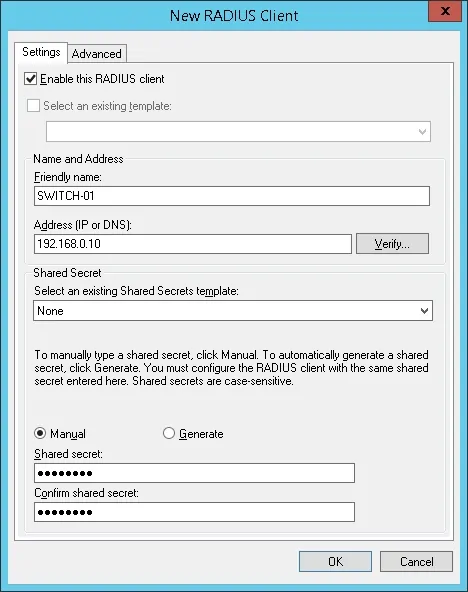
Here is an example of a Client configured to allow a Cisco switch to connect to the Radius server.
You need to set the following configuration:
• Friendly name to the device.
• Device IP Address
• Device Shared secret.
The Shared secret will be used to authorize the device to use the Radius server.
Add another client device, set the IP address of your Desktop and the shared secret kamisma123.
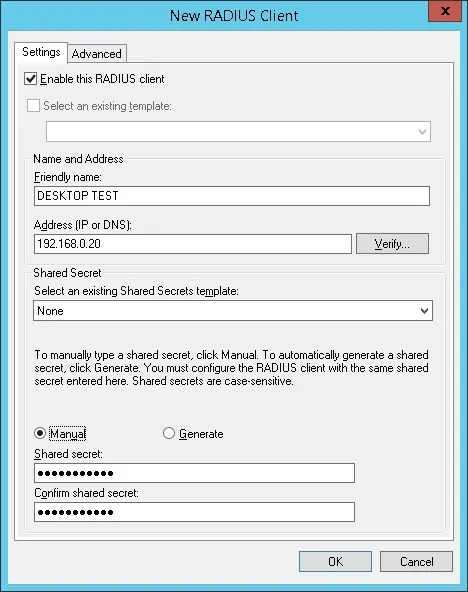
You have finished the Radius client configuration.
Tutorial Radius Server – Configure a Network Policy
Now, you need to create a Network Polity to allow authentication.
Right click on the Network Policies folder and select the New option.
Enter a name to the network policy and click on the Next button.
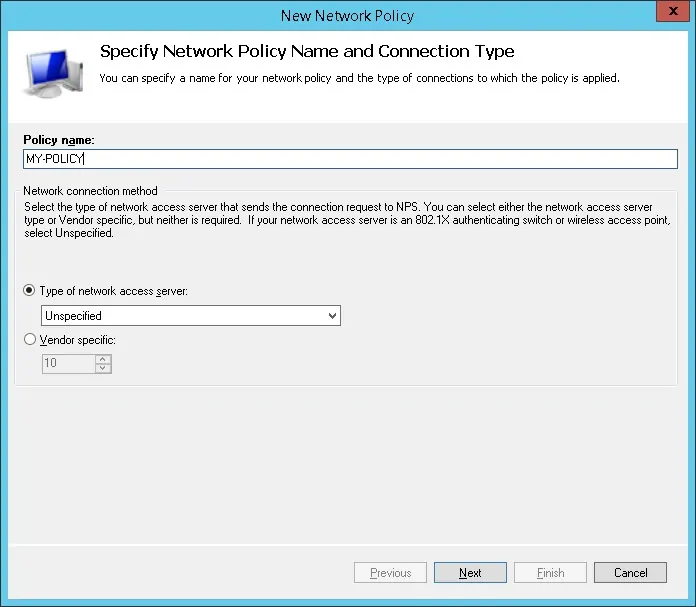
Click on the Add condition button.
We are going to allow members of the RADIUS-SERS group to authenticate.
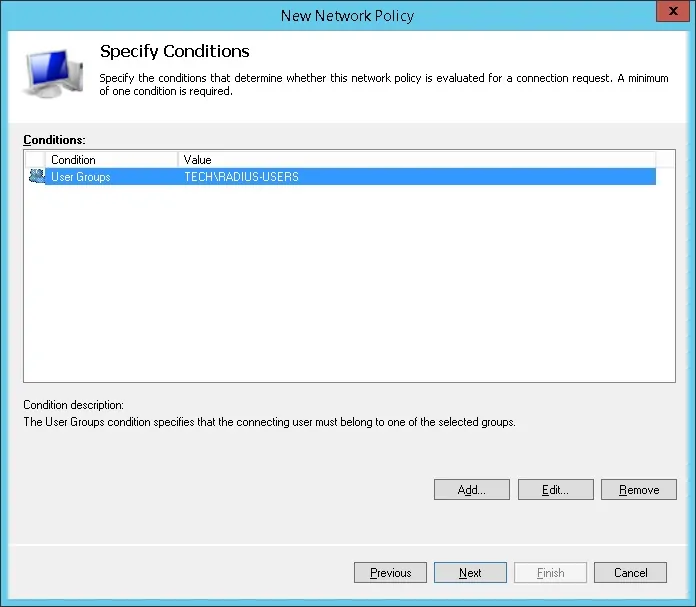
Select the User group option and click on the Add button.
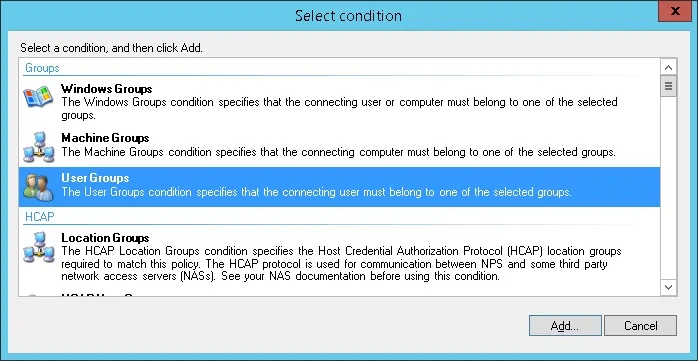
Click on the Add Groups button and locate the RADIUS-USERS group.
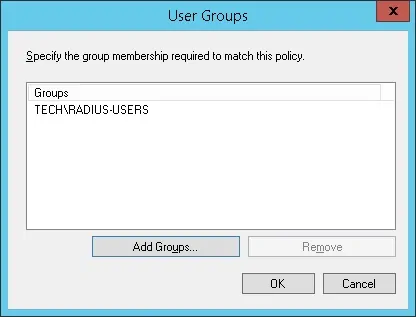
Select the Access granted option and click on the Next button.
This will allow members of the RADIUS-USERS group to authenticate on the Radius server.
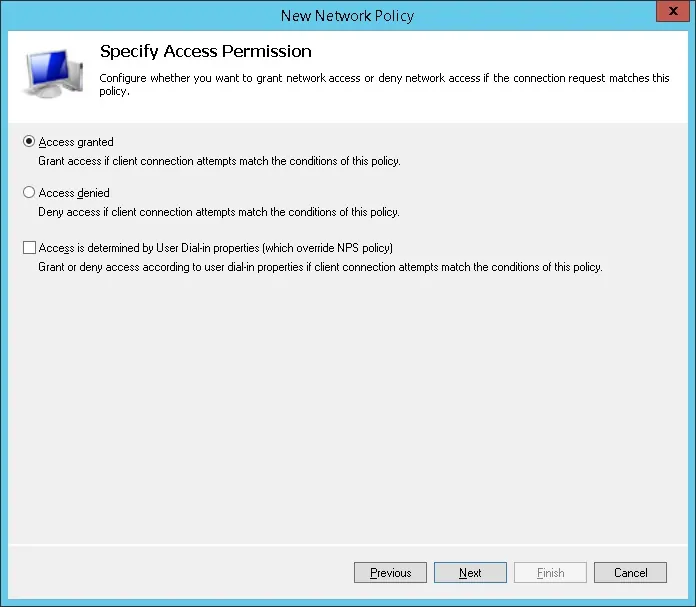
On the Authentication Methods screen, select the Unencrypted authentication (PAP, SPAP) option.
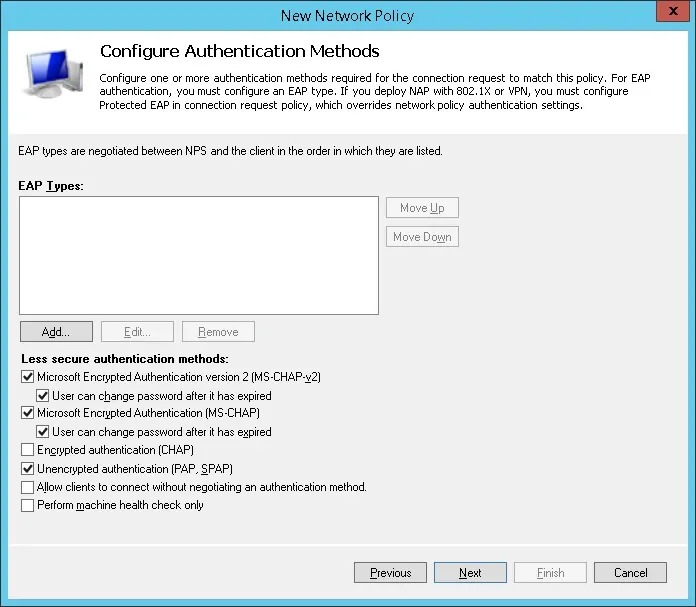
If the following warning is presented, click on the No button.
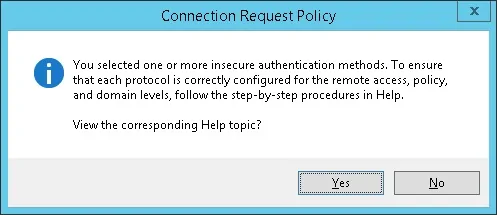
Verify the Radius server configuration summary and click on the Finish button.
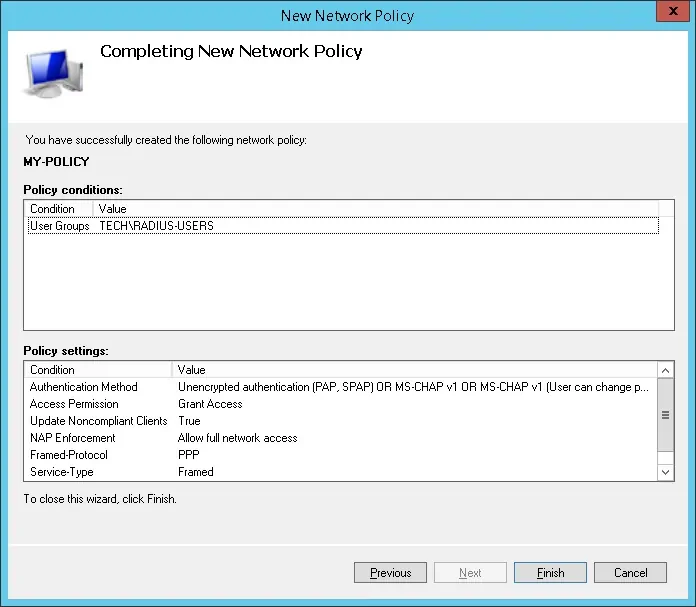
Congratulations! You have finished the Radius server configuration.
Tutorial Radius Server – Authentication Test
Test your radius authentication on your Desktop using the NTRadPing software.
The device running the NTRadPing software must be configured as a Radius client on the Radius server.
Here is a Radius authentication test example.
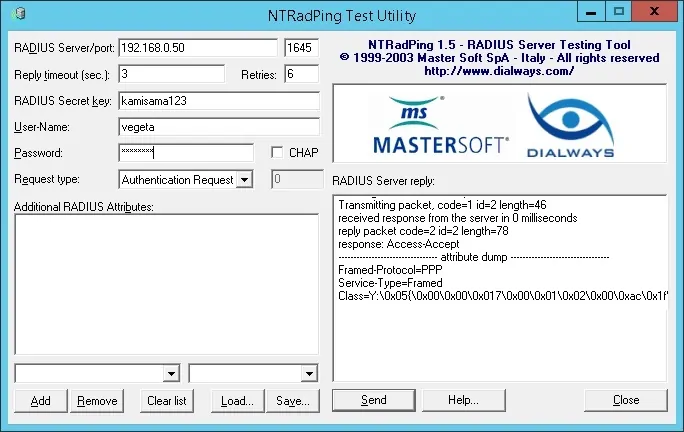
In our example, we used our Desktop as the Radius client device.
In our example, the Vegeta user account was able to authenticate on the Radius server.
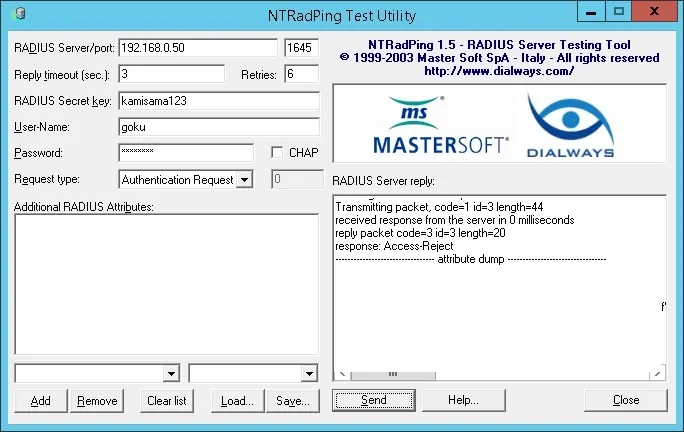
In our example, the Goku user account was not able to authenticate on the Radius server.
The Goku user account is not a member of the RADIUS-USERS group in Active Directory.
VirtualCoin CISSP, PMP, CCNP, MCSE, LPIC22020-12-26T16:48:35-03:00
Related Posts
Leave A Comment
You must be logged in to post a comment.
Page load link
Ok
Anytime there’s a discussion about a wired or wireless authentication, it’s probable that the word “RADIUS server” will come up sooner or later. RADIUS, also known as a “AAA server,” carries out the essential functions of Authentication, Accounting, and Authorization within a WPA-2 Enterprise network. As you might expect, Microsoft has improved its RADIUS server over time to meet the authentication needs of its vast customer base.
Just like Windows 2008 server, the 2012 edition has long been used by organizations across the globe until the latest versions in the form of 2016/2019/22 came into existence. Unlike its latest cloud counterparts, Windows 2012 servers are on-premise in nature and catch a great deal of attention from hackers.
Here’s a recent incident of an update causing authentication to fail, affecting primarily the on-premise setups. On-premise servers, however, are not the subject of our attention here; let’s get back to configuring the Windows 2012 server.
Before configuring the Windows Server 2012, ensure that you met the following requirements for successfully configuring the Windows 2012 server.
Prerequisites for Windows RADIUS Server 2012:
❖ System Requirements:
- Processor: You need a processor with at least 1.4 GHz for x64 processors. But Microsoft recommends using 2GHz for smooth functioning.
- RAM: The minimum requirement for RAM is 512 MB, but Microsoft recommends having at least 2GB of RAM.
- Disk space: You need a minimum disk space of 32 GB or more, but Microsoft usually recommends using 40 GB or more disk space. Also, the disk space requirements vary with the processor and RAM used in the system.
❖ Active Directory Setup:
You must update the Active Directory environment before adding the domain controller.
❖ Server Core Installation:
Unlike Windows Server 2008 version, the admin need not select the Full Installation or Server Core Installation option beforehand in Windows Server 2012.
These features are merged in the 2012 version to give three optional features which the admin can install or uninstall at his will.
❖ Miscellaneous Requirements:
- Ensure that your Windows Server 2012 kernel-mode drivers are up to date and digitally signed for x64-based operating systems.
- Turn off your antivirus software as the installation process can be hampered by virus protection software. For instance, checking each file that is copied locally to your computer might significantly slow down the installation.
- Ensure that the Windows Firewall is enabled by default.
- Ensure that all the relevant data and information are appropriately backed up before the configuration.
Overview of Windows RADIUS Server 2012 Configuration:
- Install and set up Windows Server 2012/Windows Server 2012 R2.
- Install Active Directory Domain Services (ADDS) to configure the new domain.
- Install Certificate Authorities (CA) with Active Directory Certificate Services (ADCS).
- Install NPS ( Network Policy Server).
- Configure Certificate Authorities (CA), i.e., Active Directory Certificate Services (ADCS) for Certificates.
- Configure NPS ( Network Policy Server) for the authentication protocol.
- Configure RADIUS.
- Define Network policies for users/devices.
- Configure Access Point.
- Set up zero clients, and select 802.1x authentication.
- Configure Wireless Connection Request.
Now we will see each step involved in configuring Windows 2012 server in detail:
Install and Configure AD DS:
For configuring ADDS, follow the given instructions:
- Navigate to Windows Server 2012.
- Click Start.
- Click Server Manager.
- Navigate to Role Summary.
- Click Add Roles and Features.
- Select Role-based or Feature-based installation.
- Navigate to the Before You Begin page and click Next.
- Navigate to the Select Server Roles page.
- Select the Active Directory Domain Services.
- Click Next.
- Click Install on the Confirm Installation Selections
- Navigate to the Installation Results page and click Close.
- ADDS is installed.
Install AD CS and NPS :
- Navigate to Server Manager.
- Select Roles and Click Add Roles.
- Click Next on the Before you Begin page.
- Select Active Directory Certificate Services (AD CS) and Network Policy and Access Services.
- Click Next.
- Click Next on Network Policy and Access Services
- Navigate to Role Services and select Network Policy Server.
- Click Next.
- Select Create a self-signed certificate for SSL encryption and click Next.
- Click Next on the Introduction to Active Directory Certificate Services
- Select Certification Authority on the Select Role Services page and click Next.
- Select Enterprise on Specify Setup Page and Click Next.
- Select Root CA on Specify CA Type Page and Click Next.
- Select Create a new private key on the Set Up Private Key Page and Click Next.
- Click Next on Configure Cryptography for CA.
- Enter details on Configure CA Name page and click Next.
- Enter the validity period on the Set Validity Period page and click Next.
- Click Next on Configure Certificate Database
- Click Next on the Web Server (IIS).
- Click Next on the Select Role Services.
- Click Install on the Confirm Installation Selection
- Click Close.
Now the AD CS (Active Directory Certificate Services), Web Server (IIS), and NPS are installed successfully.
Configure NPS ( Network Policy Server) and RADIUS authentication.
- Click on the Start button and select Administrative tools.
- Click NPS on the Network Policy Server.
- Select Register Server in Active Directory and click OK.
- Click OK.
- On the NPS (Local) page, select RADIUS server for 802.1x Wireless or Wired Connections.
- Click Configure 802.1x.
- Select Secure Wireless connections on the Configure 802.1x page.
- Type Name and click Next.
- Add RADIUS clients on the Configure 802.1x page and click Next.
- Type the following details on the New RADIUS Client page.
- Name
- IP Address
- Shared Secret (Manual)
- Click OK and click Next.
- Select Microsoft Protected EAP (PEAP) on the Configure 802.1x
- Click Configure.
- Select Secured password on the Edit Protected EAP Properties page and click Edit.
- Enter the Number of authentication retries and click OK and click Next.
- Select Groups and click Next.
- Click Next again and click Finish.
- Restart NPS again.
Define Network Policies for users/devices.
You can follow the given steps for Defining the network policies.

- Navigate to the NPS console and click NPS (local).
- Click and expand Policies.
- Select Network Policies.
- Click New.
- Enter a Policy Name.
- Select the Type of Network Access Server to Unspecified while using Netscaler or RCdevs OpenLDAP while using OTP.
- Click Add in Specify Conditions
- Select Windows Groups and click Add.
- Click Add Groups and click OK.
- Select NAS Identifier in the Select Conditions
- Enter a Name and select Next to continue.
- Select Access Granted in Specify Access Permission
- Under Configure Authentication Method, select MS-CHAP v2 for maximum security.
- Click Next.
- Select RADIUS attributes as Standard in Configure Settings.
- Click Add.
- Enter the attribute value in String and click OK.
- Click Next and click Finish.
You can use the Network Policy Wizard to create and add new conditions, constraints, and setting to the network policies.
Administrators can define and implement a wide range of policies using our Cloud RADIUS, including lookup policies applied at the moment of authentication. For instance, depending on the time of day, you can decide whether to accept or reject people and devices. You may also restrict access to devices running a specific operating system.
Set up Zero Clients, and Select 802.1x Authentication
- Navigate to the Control panel and open the Network and Sharing center.
- Click Change adapter settings.
- Select Local Area Connection and click Properties.
- Select Authentication and click Enable IEEE 802.1x authentication.
- Select the desired protocol in the dropdown button.
Configure Wireless Connection Request
- Navigate to the Control panel and open the Network and Sharing center.
- Click Manage Wireless Networks.
- Select Manually Create a network profile.
- Enter your SSID in Network Name and click Next.
- Click Change Connection settings.
- Select Security and click Settings.
- Select the Trusted Root CA and click OK.
- Navigate to Advanced Settings.
- Select Specify Authentication Mode and click OK.
Is On-Premise Windows RADIUS a Good Idea?
Traditional RADIUS servers located on a company’s premises are prone to many security issues. Windows RADIUS servers—which are extensively used in on-premise infrastructure—are typically built around NPS and have a number of vulnerabilities that hackers routinely employ in zero-day attacks.
Also, because of its physical accessibility, an NPS server’s on-premise presence makes it vulnerable to various physical security threats, from intruders to disasters – or just power outages. Given the costs of maintaining highly-secure physical locations, there’s rarely a circumstance in which on-prem works out to be cheaper than cloud RADIUS.
Cloud integration of NPS, designed primarily for on-premise AD setups, has significant downsides even with other Microsoft-owned cloud-based solutions like Azure AD. If you want to use Azure with NPS, you will require a separate authentication server or proxy to simplify the process. These operations are not only challenging and time-consuming but also relatively expensive.
Cloud RADIUS: The Most Reliable RADIUS Server for Windows

Network administrators have relied on Windows Server 2012 edition for years, but it has seen most of the Microsoft ecosystem change since that time. It is difficult to overlook its flaws, which are more of a security liability than a strength in the present era.
The move to the cloud offers several benefits over remaining in an on-premises environment, and what could be better than utilizing our ground-breaking Cloud RADIUS? You can nearly wholly avoid these limitations by using a cloud-based server like Cloud RADIUS supported by SecureW2.
With our Cloud RADIUS’ advanced Policy Engine feature, you may restrict or enable user access depending on any number of attributes, including user/device characteristics, date/time of day, and more. Additionally, you may use our Cloud RADIUS with any IDP because it is built for vendor neutrality.
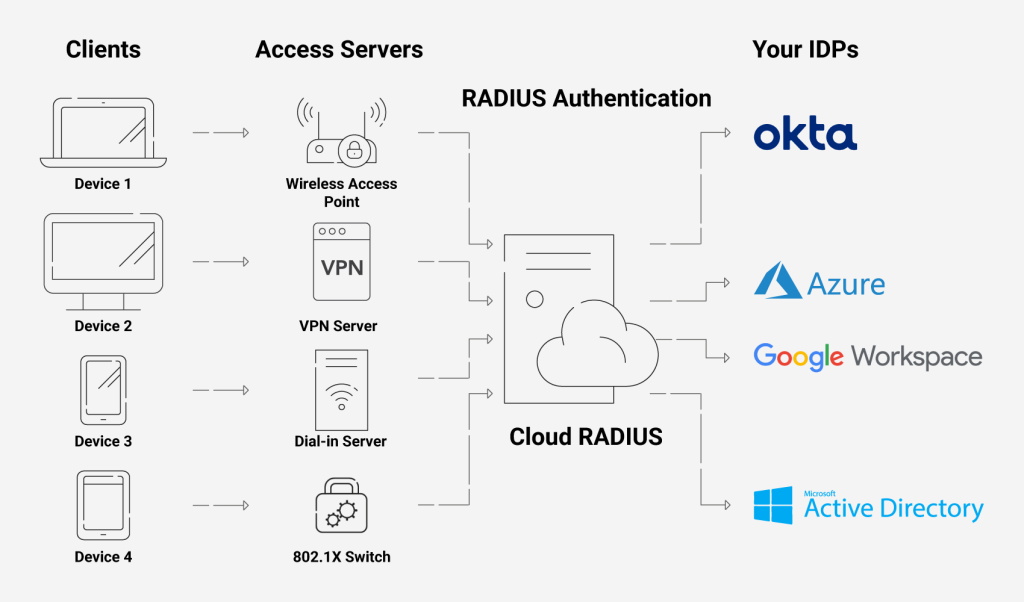
Using its servers, you may also enforce policies using real-time user lookups against Azure, Okta, and Google Workspace. You can also onboard users to Cloud RADIUS using their existing AD identities without the need to create an LDAP proxy.
Also, integrating with Securew2 gives you more customization for many innovative features like Azure MFA auth, Intune auto revocation, windows hello for business login, and many more. Our RADIUS services can be set up quickly, cost a fraction of what on-prem solutions do, and has no infrastructure costs because it is all in the cloud.
If you are interested in taking that first step towards security for your organization, look no further and click here to inquire about pricing.
Рассмотрим настройку Radius аутентификации на Cisco устройствах, посредством службы Политики сети и доступа (Network Policy Server) на Windows Server 2012 R2.
Добавление роли, настройка Active Directory
Добавляем роль , переходим в Диспетчер серверов — Управление — Добавить роли и компоненты.
Выбираем роль (Службы политики сети и доступа):

Выбираем службу ролей (Сервер политики сети):

Для завершения установки роли, нажимаем Установить и дожидаемся установки компонента, после чего нажимаем Завершить.
В Active Directory необходимо создать группу безопасности (прим. NPS_Cisco) и включить в нее пользователей кому будет разрешена аутентификации на маршрутизаторах и коммутаторах Cisco.

Настройка Network Policy Server
Открываем оснастку Сервер политики сети (Network Policy Server).
Для полноценного использования функций NPS-сервера в домене, выполним регистрацию его в Active Directory. В оснастке на NPS (Локально), нажимаем правой кнопкой мыши и выбираем Зарегистрировать сервер в Active Directory (Register server in Active Directory):

Подтверждаем регистрацию сервера в Active Directory:
После регистрации NPS в Active Directory, добавим клиента RADIUS. На строке RADIUS-клиенты и серверы (RADIUS Clients and Servers) щелкаем правой кнопкой мыши и выбираем Новый документ (NEW):

Во вкладке «Параметры» вводим Понятное имя (Friendly name), IP-адрес (Address) и Общий секрет (Shared Secret). Во вкладке «Дополнительно» указываем Имя поставщика (Vendor name) — Cisco
[stextbox id=’info’]Значение в поле Понятное имя (Friendly name) может отличаться от DNS имени. Оно потребуется нам в дальнейшем для идентификации конкретного сетевого устройства при создании политик доступа. Опираясь на это имя мы сможем задавать например маску по которой будут обрабатываться определённой политикой доступа несколько разных RADIUS клиентов.[/stextbox]
Раскрываем ветку Политики (Policies) — Сетевые политики (Network Policies) и щелкаем правой кнопкой мыши и выбираем Новый документ (NEW):

Задаем Имя политики (Policy name), Тип сервера доступа к сети (Type of network access server) оставляем без изменения:

Задаем условия, которые должны соответствовать для успешной аутентификации. Создадим два условия:
- Группы пользователей (указываем ранее созданную в Active Directory группу безопастности)
- Понятное имя клиента (указываем дружественные имена, начинающиеся с префикса CISCO_)
Результат добавления условий:

Указываем разрешение доступа, оставляем значение Доступ разрешен (Access Granted).

Cisco поддерживает только методы Проверка открытым текстом (PAP, SPAP) (Unencrypted authentication (PAP, SPAP)). Снимите все флажки и отмечаем только Проверка открытым текстом (PAP, SPAP):

После настройки методов проверки подлинности вам будет предложено настроить Ограничения (Constraints), пропускаем этот раздел и переходим к следующему шагу.
Настройка параметров (Configure Settings), переходим в Атрибуты RADIUS (RADIUS Attributes) — Стандарт (Standard). Удаляем имеющиеся там атрибуты и нажимаем Добавить… (Add…)
Тип доступа выбираем Service-Type, нажимаем Добавить, выставляем значение атрибута Login


переходим в Атрибуты RADIUS (RADIUS Attributes) — Зависящие от поставщика (Vendor Specific), добавляем новый атрибут, и нажимаем Добавить… (Add…)
В пункте Поставщик (Vendor), указываем Cisco и нажимаем Добавить… (Add…). Будет предложено добавить сведения об атрибуте, нажимаем Добавить… (Add…) и устанавливаем значение атрибута:
shell: priv-lvl = 15

В итоге должно получится как изображено ниже. Нажимаем Далее (Next).
Представление сводки новой политики, которая была сформирована. Нажимаем Готово (Finish):

После создания политики, можно переходить к настройке маршрутизаторов и коммутаторов Cisco для аутентификации на сервере Radius NPS.
Настройка Cisco IOS AAA
Сперва настроим локальную учетную запись (прим. admin), на случай выхода из строя RADIUS-сервера, выполняем команды:
cisco>enable cisco#config terminal cisco(config)#username admin priv 15 secret Aa1234567
Выполняем последовательность действий по добавлению RADIUS-сервера:
- Включаем режим AAA
- Добавляем RADIUS-сервер
- Настраиваем профиль аутентификации (сперва RADIUS-сервер, если он не доступен, то тогда локальные учетные записи)
- Настраиваем профиль авторизации (сперва RADIUS-сервер, если он не доступен, то тогда локальные учетные записи)
- Включаем аутентификацию на интерфейсах
Пример настройки на Cisco 2911/K9 15.0(1r)M12
cisco(config)#aaa new-model cisco(config)#radius server NPS cisco(config-radius-server)#address ipv4 10.10.10.1 auth-port 1645 acct-port 1646 cisco(config-radius-server)#key CISCO cisco(config-radius-server)#exit cisco(config)#aaa group server radius NPS cisco(config-sg-radius)#server name NPS cisco(config-sg-radius)#exit cisco(config)#aaa authentication login NPS group NPS local cisco(config)#aaa authorization exec NPS group NPS local cisco(config)#aaa authorization console cisco(config)#line console 0 cisco(config-line)#authorization exec NPS cisco(config-line)#login authentication NPS cisco(config)#line vty 0 4 cisco(config-line)#session-timeout 30 cisco(config-line)#authorization exec NPS cisco(config-line)#login authentication NPS cisco(config-line)#transport input ssh cisco(config)#line vty 5 15 cisco(config-line)#session-timeout 30 cisco(config-line)#authorization exec NPS cisco(config-line)#login authentication NPS cisco(config-line)#transport input none
Пример настройки на Cisco WS-C3750V2-48TS 12.2(55)SE5
cisco(config)#aaa new-model cisco(config)#radius-server host 192.168.0.1 key Aa1234567 cisco(config)#aaa authentication login NPS group radius local cisco(config)#aaa authorization exec NPS group radius local cisco(config)#aaa authorization console cisco(config)#line console 0 cisco(config-line)#authorization exec NPS cisco(config-line)#login authentication NPS cisco(config)#line vty 0 4 cisco(config-line)#session-timeout 30 cisco(config-line)#authorization exec NPS cisco(config-line)#login authentication NPS cisco(config-line)#transport input ssh cisco(config)#line vty 5 15 cisco(config-line)#session-timeout 30 cisco(config-line)#authorization exec NPS cisco(config-line)#login authentication NPS cisco(config-line)#transport input none
Это минимальная настройка аутентификации/авторизации на маршрутизаторах/коммутаторов Cisco.
ПОНРАВИЛАСЬ ИЛИ ОКАЗАЛАСЬ ПОЛЕЗНОЙ СТАТЬЯ, ПОДДЕРЖИ АВТОРА ДОНАТОМ

